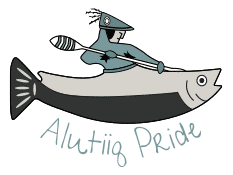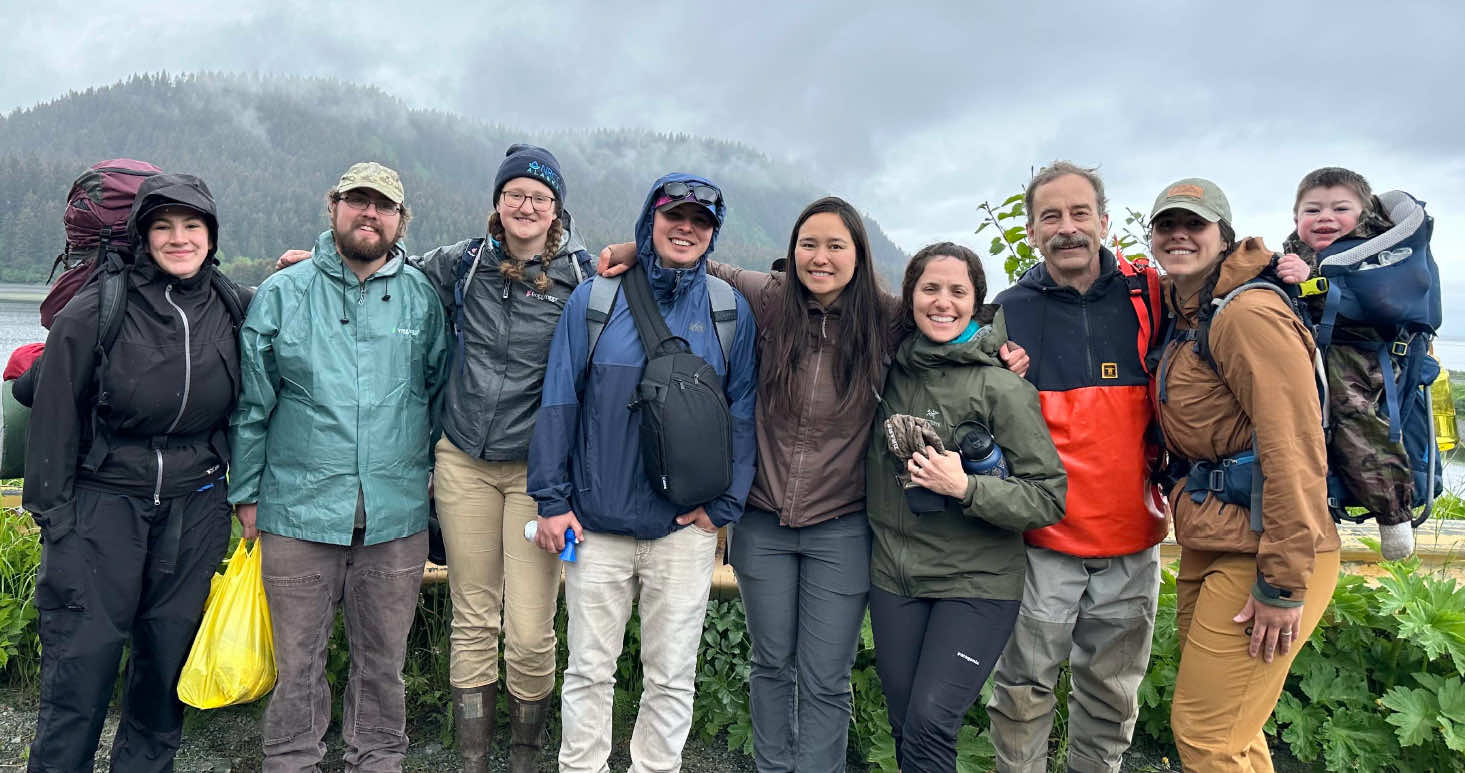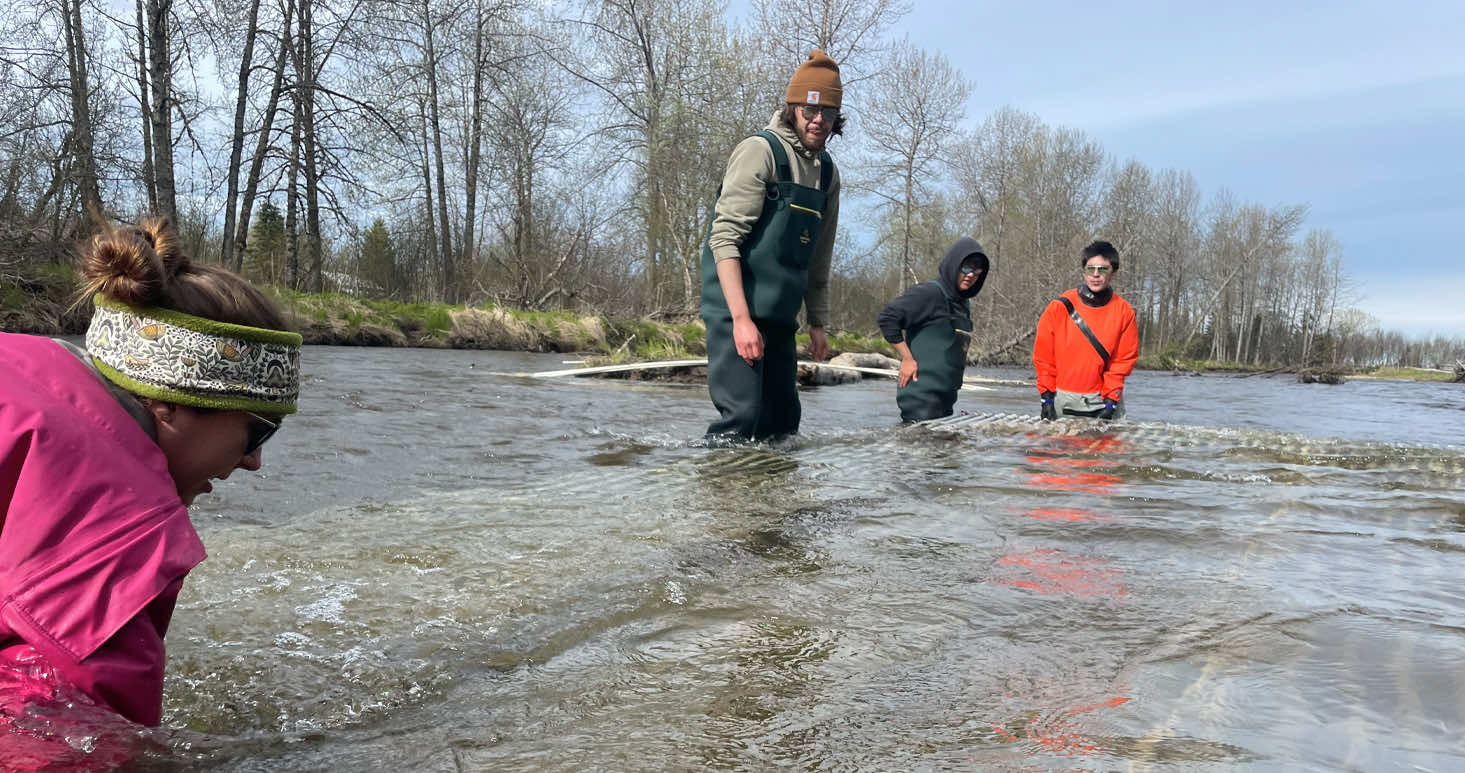CRRC 2019 Q4 Newsletter

CRRC has been busy these last few months! Take a look below to see what staff have been up to. We also include other regional and noteworthy news.
Jeff Hetrick, director of the Alutiiq Pride Shellfish Hatchery in Seward, Alaska, says the more information there is on local ocean chemistry, the better he and others in the shellfish industry are able to maintain their hatcheries.

On the open ocean, scientists have been measuring those parameters for decades. But in many remote nearshore regions, little data, if any, exists to indicate what’s happening to coastal ecosystems as oceans become increasingly acidic. This data is of vital importance, especially for Alaska’s burgeoning shellfish industry.
Allison Bidlack, director of the Alaska Coastal Rainforest Center at the University of Alaska Southeast, says acidification has rocked Washington State’s shellfish growers in recent years, and Alaska’s growers fear similar hardships. “They are concerned about whether or not we could start seeing the same effects up here,” Bidlack says. Providing that insight is one of the motivations behind the research, and she hopes the project’s findings can point to certain bays or fjords that might foster bivalve rearing.
As oceans continue to absorb carbon dioxide from the atmosphere, some coastal species face dire consequences. When carbon dioxide dissolves into seawater, it reduces the availability of calcium carbonate, the chemical needed by certain animals to form their shells. Without easy access to carbonate, juvenile organisms need to expend more energy to put on shell. This can compromise their health by making them more susceptible to disease. It can also hinder their growth, an important consideration for shellfish farmers.
Jeff Hetrick, director of the Alutiiq Pride Shellfish Hatchery in Seward, Alaska, says the more information there is on local ocean chemistry, the better he and others in the shellfish industry are able to maintain their hatcheries. For instance, if observations show the level of carbonate in the water is dropping, they can add soda ash to the shellfish tanks to counteract it. Monitoring efforts like that on the MV Columbia provide that needed data, he says.
Although the MV Columbia has been gathering data since October 2017, the project was years in the making. Bidlack had long wanted to use a ferry as a platform for ocean monitoring, figuring that unlike some other oceanographic research efforts, which offer snapshots in time, a ferry would provide reliable, continuous data along its all-season route. Akin to repeating an experiment over and over again, the MV Columbia could provide that information twice a week for months on end.
In the winter of 2014, while attending an ocean acidification workshop, she met Wiley Evans, an oceanographer then working for the US National Oceanic and Atmospheric Administration and now with the Hakai Institute*. A veteran of ocean-bound projects with lengthy routes—including one aboard a container ship where he “babysat a carbon dioxide system” from California to New Zealand—Evans had recently returned from Whittier, Alaska, where he had measured carbon dioxide from a glacier-tour vessel.
“I grabbed him at that workshop,” Bidlack recalls, “and I was like, ‘Listen, this is what I want to do. I think we can do it. I think we can get the buy-in from the ferry system to do this. Are you interested?’” The two quickly hatched a plan.
Despite their enthusiasm, it took three more years to get the MV Columbia ready for data collection. First, engineers outfitted the ferry with a seawater line to tap water from the ocean, then they drilled holes through the hull to install the oceanographic equipment—both of which required approvals by the US Coast Guard. Propeller and engine problems further delayed the launch.** “We were naive,” Evans says about the setbacks.
An infusion of glacial meltwater means that the water in Lynn Canal, Alaska, is particularly sensitive to changes in carbon dioxide. Photo by Design Pics Inc/Alamy Stock Photo
As Evans combed through the data, some surprising trends jumped out. For one, the amount of carbon dioxide in the water is lower in some areas than he was expecting, notably in regions where phytoplankton is blooming or where glacial meltwater flows into the sea. In contrast, higher concentrations of carbon dioxide are found in sites where deep ocean water wells up toward the surface. Due to a process known as buffering, even the same change in carbon dioxide can have a varying effect on the acidity of the water, Evans says.
“If you remember titration back from high school chemistry, pH doesn’t change a whole lot at the beginning,” Evans says. “But then as you keep adding the titrant, and the fluid that you’re titrating becomes less and less buffered, the pH change becomes bigger. It’s the same idea.”
This means that if the water is less buffered, which it naturally is in the winter—because photosynthesizing organisms have less sunlight to work with, and because storms churn the water bringing inorganic carbon up from the depths—then it’s easier for anthropogenic carbon dioxide to lower the water’s pH, Evans says, which can hurt sensitive shell-building organisms.
But unfortunately for the monitoring team and Alaska’s shellfish producers, the project may be cut short. In September, the Alaska Marine Highway System will take the MV Columbia out of service for the winter, replacing it with a smaller vessel that’s less expensive to run. The decision reflects recent budget cuts by the Alaska legislature to the state’s ferry system.
There’s a chance the MV Columbia will return to service in the spring, Bidlack says. But given the wear and tear that years of salt water and a long transit route have inflicted, the fate of the ship remains unclear. “We really don’t know what’s going to happen,” she says.
Though the ferry has its eccentricities, Harrington emphasizes the importance of the vessel to the ocean monitoring project.
“It’s a perfect platform to provide this type of research,” she says, “and the outcome will definitely provide Alaska with great [data] … for our current and future fisheries.”
*The Hakai Institute and Hakai Magazine are both part of the Tula Foundation. The magazine is editorially independent of the institute and foundation.


Affiliated Tribes of Northwest Indians’ (ATNI) 2019 Tribal Climate Camp
By Chelsea Kovalcsik
On June 17-21 Chugach Regional Resources Commission’s AmeriCorps VISTA, Chelsea Kovalcsik, traveled to Polson, Montana to attend the Affiliated Tribes of Northwest Indians’ (ATNI) 2019 Tribal Climate Camp. Chelsea attended the camp with Nanwalek tribal member and IGAP assistant, Cybill Berestoff. The overall goal of the Tribal Climate Camp was to build the capacity of Indigenous people to address climate change and associated economic, social, cultural, regulatory, and technological trends and impacts within their tribes, between programs within tribes, between different tribes, and between tribes and other governments and entities, through strategic alliances with partners across Indian Country and globally. At the Tribal Climate Camp Chelsea and Cybill were able to connect with numerous other tribes and tribal members, as well as non-tribal members, all working to get a better understanding of how a changing climate will impact their tribe and their sacred lands. The camp was hosted by the Confederated Salish and Kootenai Tribes (CSKT) and was located on the gorgeous Flathead Lake. Mike Durglo, CSKT, brought elders in to speak to attendees about local environmental changes occurring in and around Flathead Lake as well as inviting Tribes from all over the U.S. to share their knowledge and experience about climate change. Mike Durglo and other speakers shared numerous resources for attendees to utilize when creating climate action plans, including how to create vulnerability assessments, websites that provide a western science approach, ways of incorporating traditional knowledge into adaptation planning, and potential funding resources. Chelsea had an excellent time at the camp and truly believes that what she learned at ATNI’s Tribal Climate Camp will help her with her job at CRRC as well as help CRRC’s member villages in their fight against climate change.



Alaska Governor’s Mariculture Task Force

The AMTF was directed to create a comprehensive plan to boost the mariculture industry, which includes aquatic farming and enhancement of wild fisheries in Alaska.
The Alutiiq Pride Shellfish Hatchery’s Director, Jeff Hetrick, has been re-elected to serve on the AMTF along with colleagues from Sitka. For a full list of members, click here.
CRRC Board Member, Bob Henrichs invited to home of Lt. General Bussiere on JBER

The Lt. General and his wife greeted the guests and thanked them for their service on the Civilian Advisory Board. They also provided a very interesting history of their home, the Quarters One. This 76-year-old home was completed in 1942, at a cost of $36,950. It has remained the primary residence for the senior commander in Alaska since it was converted to general’s quarters in 1956. The historical significance of Quarters One stems from serving as the setting for the September 1971 meeting between President Nixon and Emperor Hirohito of Japan. In an effort to ease rising diplomatic tension, the two heads of state met for the first time in history. This occasion marked the first time in 2,600 years that a Japanese Emperor had visited a foreign country.
While at the Social, Bob met his fellow Board members, and discussed his work with the Alaska Native Tribal Health Consortium, commercial fishing, and general background information on the Chugach Region Tribes and programs. He discovered that one of the Board members is also a Board member for the Alaska Pacific University (APU) so they had an opportunity to discuss common goals for APU.
The Alaskan Command consists of all branches of the military in Alaska under the Department of Defense, including the U.S. Air Force, U.S. Army, U.S. Marine Corp, and the U.S. Navy. The Alaskan Command, in coordination with trusted partners, conducts homeland defense, civil support, mission assurance, and security cooperation within the Alaskan Command Joint Area of Operation to defend and secure the United States and its interests.
Department of Defense forces in Alaska include more than 22,000 U.S. Air Force, U.S. Army, U.S. Navy, and U.S. Marine Corps personnel, and 4,700 Guardsmen and Reservists. This does not include the U.S. Coast Guard, who operates under the Department of Homeland Security, and has approximately 2,500 members serving in Alaska.

Ocean Temperatures Could Influence Algal Bloom Occurrence in Alaska
Read more here!

Chelsea spent 4 weeks, from July 19-August 17, in Homer attending the Alaska Coastal Summer Institute (AKCSI). AKCSI is built around four core experiences (each about a week in duration) hosted by local research agencies and community-organizations in the Kachemak Bay area. These core experiences provide a fun, fascinating, and highly effective way to learn how scientific knowledge is being built and used in Kachemak Bay. Each core experience determined by the partner agencies offers students insight into their most interesting and important research, community-based monitoring, and science communication work. Chelsea worked with ADF&G collecting otolith and DNA samples, tagging king and pink salmon, and understanding fish migration in the Kenai Peninsula as well as how weirs work. She worked with NOAA at the Kasitsna Bay lab seining for near-shore fish looking at how glacial melt will impact juvenile and adult salmon as well as studying the intertidal zones and what species inhabit these areas. Chelsea took a trip to Grewingk Glacier to observe, first-hand, how decreased snow pack will impact water availability in the region and the rate at which glaciers in Kachemak Bay are melting. Chelsea worked with KNBERR on projects ranging from juvenile salmon in peatlands, observing ocean chemistry in near-shore environments, collecting zooplankton and identifying HAB’s as well as the impacts on shellfish and other species, and learning about the importance of estuaries in the marine environment. Chelsea spent a week at Peterson Bay Lab working along the Kenaitze Indian tribe during their harvest camp. She listened to a handful of tribal members from the region, Nancy Yeaton, Michael Opheim, and Stephen Peyton, talk about important cultural subsistence foods and the way those are changing in the face of global warming. Chelsea also had a chance to work with the Alaska Maritime National Wildlife Refuge to learn about the bird die-offs throughout Alaska, potential causes, the COASST program, and what the research about birds happening out at Gull Island and in Lower Cook Inlet with USGS. Throughout the entire four weeks, the AKCSI group took a class to try and understand how to better communicate science to a diverse audience. The class focused on different means of communication and how, depending on who you are talking to, those techniques will change. Chelsea also spent time learning about marine mammals in the region and even about some points of contention between community groups regarding resources. Chelsea was able to attain job-related skills in research design, data collection, analysis, and scientific communication as well as build up her professional network and become more familiar with a number of the research agencies working in Kachemak Bay.




New video focuses on Alaska’s acidifying oceans



Top left: Jacqueline Ramsay, Shellfish Biologist and Ocean Acidification Lab Manager at the Alutiiq Pride Shellfish Hatchery and National Oceanic and Atmospheric Administration employees Kristin Cieciel and Erika Ammann who visited to take genetic samples of abalone; Bottom left: Kattie Maddox, and intern working on tagging abalone, and Jacqueline Ramsay, Shellfish Biologist and Ocean Acidification Lab Manager at the Alutiiq Pride Shellfish Hatchery; Bottom right: National Oceanic and Atmospheric Administration colleagues, Julie Scheurer and Allie Conrad from Juneau working on a crab research project.




